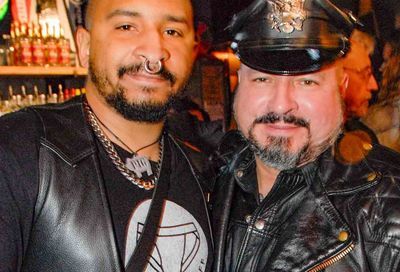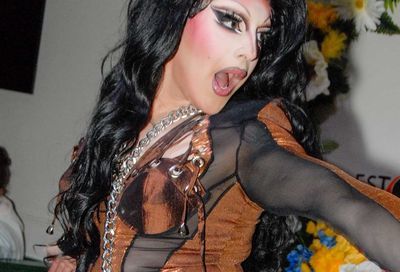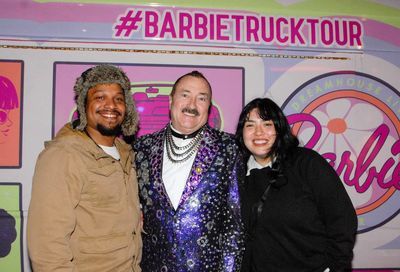Marlene Dietrich pioneered “embracing bisexuality without apology”
The National Portrait Gallery examines Marlene Dietrich's profound influence on queer identity

“I see lots of women and men today who identify as straight, but who understand an attraction to people of their own sex,” says Kate Lemay, who counts herself among them. “And I think that understanding is really a sign of progress, and a sign of openness.”
A historian at the National Portrait Gallery, Lemay adds, “Maybe we’re catching up to Berlin of 1920s.” Indeed, a decade before the rise of the Nazis, the German capital was known as a progressive hotbed, boasting a thriving gay scene and the sense that people had the “freedom of choice to express themselves however they wanted.” That’s where Hollywood screen legend Marlene Dietrich got her start.
“She’s an early pioneer of cross dressing and of embracing bisexuality without apology,” Lemay says. Dietrich did it, in fact, in her very first Hollywood film — the Josef von Sternberg’s 1930 drama, Morocco, which earned the actress her only Academy Award nomination. In the film’s most famous scene, her character, a cabaret singer, kisses another woman while dressed in a men’s tuxedo. As a result, says Lemay, Dietrich “was able to introduce to a very conservative, American, puritan population the idea of accepting women being attracted to other women.”

Curated by Lemay, the National Portrait Gallery’s Marlene Dietrich: Dressed for the Image charts the actress’s career, longevity, and influence on everyone from Madonna and Jane Lynch to Janelle Monae. It includes details about the 1955 outing of the German-born actress as bisexual. “She was featured as being bisexual and having relationships with very, very out, butch lesbians,” Lemay says of the feature, which appeared in the gossip-tabloid, Confidential Magazine. “Dietrich didn’t even respond. She didn’t make anything of it. When other stars of her profile were featured in Confidential, they often sued for libel. Dietrich just walked away from it. She didn’t care.”
Lemay believes Dietrich fits very well in the National Portrait Gallery’s roster of LGBTQ-influenced exhibits, including 2010’s controversial Hide/Seek and 2011’s Seeing Gertrude Stein: Five Stories.
“The Portrait Gallery is not a museum that only talks about dead white men,” she says. “We are very conscientious about the diversity in American culture, and that includes people who are queer, lesbian, gay, bisexual, transgender. We’re very aware of the fact that we have a rich and very, very interesting American nation, and we’re trying to ensure that audiences realize this, and that we reflect the nation. It’s not just the robber barons from the 19th century we’re interested in.”
Marlene Dietrich: Dressed for the Image is on display through April 15, 2018 at the National Portrait Gallery, 8th and F Streets NW. Call 202-633-8300 or visit npg.si.edu.
Support Metro Weekly’s Journalism
These are challenging times for news organizations. And yet it’s crucial we stay active and provide vital resources and information to both our local readers and the world. So won’t you please take a moment and consider supporting Metro Weekly with a membership? For as little as $5 a month, you can help ensure Metro Weekly magazine and MetroWeekly.com remain free, viable resources as we provide the best, most diverse, culturally-resonant LGBTQ coverage in both the D.C. region and around the world. Memberships come with exclusive perks and discounts, your own personal digital delivery of each week’s magazine (and an archive), access to our Member's Lounge when it launches this fall, and exclusive members-only items like Metro Weekly Membership Mugs and Tote Bags! Check out all our membership levels here and please join us today!




















